This is a drawing of the evolution of the interior of a giant planet.
Click on image for full size
Image from: The New Solar System
How the Interior of Uranus Formed
The drawing shows a possible path in the evolution of the interior of giant planets. As the planets
drew material from the
solar nebula, bits of heavy, solid material accumulated inside the forming planet, as illustrated in figure A.
Once the planet finished forming, these heavy, solid bits of material fell into the center of the planet, as illustrated in figure B. The heavy elements of the planet made up a much smaller portion of the planet than the gaseous elements. The amount of gas and ice which make up Uranus depended upon where Uranus was in the primordial cloud.
Eventually, the heavy, solid material at the center solidified into a core, as illustrated in figure C.
Leftover heat from this process of Uranus' forming may still influence the motions in Uranus' atmosphere.
You might also be interested in:
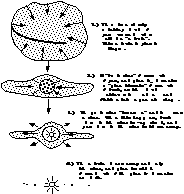
The solar system contracted, or shrank together, out of a spinning cloud of hydrogen and helium gas. This spinning cloud had a certain amount of momentum, which caused it to flatten, somewhat the way a
...more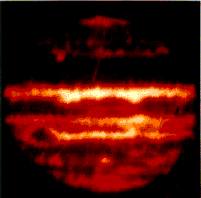
In astromony, it is a usual procedure to calculate the luminosity of a star, and this calculation indicates the energy and the temperature of the star. When the luminosity of the outer planets was calculated,
...more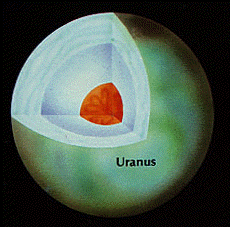
The Giant planets do not have the same kind of structure inside that the terrestrial planets do. Their evolution was quite different than that of the terrestrial planets, and they have much more gas and
...more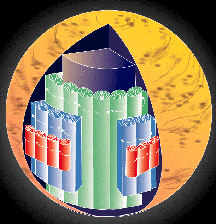
Motions, or currents in the interior of a gas-giant planet such as Uranus may be very different from the motions typical of the Earth's interior. A second idea for the motions in the interior of a gas-giant
...more
Motions in the interior of a planet help carry heat from the inside to the outside. The drawing to the left illustrates the kind of movements that happen in interior of a planet. Material rises from the
...more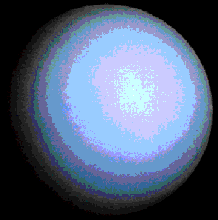
Atmospheres of the giant planets have definitely evolved from their formation out of the primitive solar nebula. How much they have evolved remains to be seen, however. Because of their enormous gravity,
...more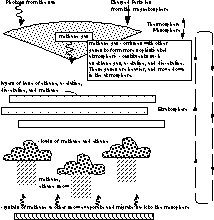
The major gaseous constituent of the atmosphere is methane. At the uppermost reaches of the atmosphere, near the thermosphere, methane gas breaks apart due to the influence of energetic photons or charged
...more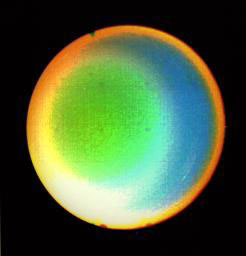
Motions in the atmosphere include wind. The major winds in the Uranian atmosphere are the zonal winds which consist of westward flowing zones and eastward flowing belts. The other major means of motion
...more














